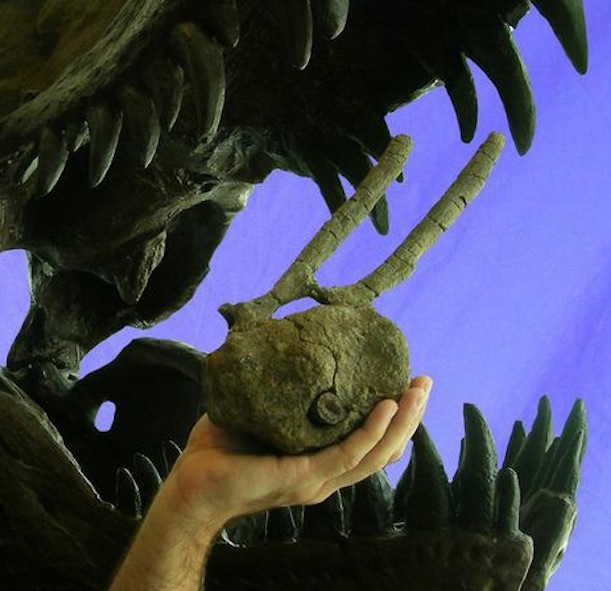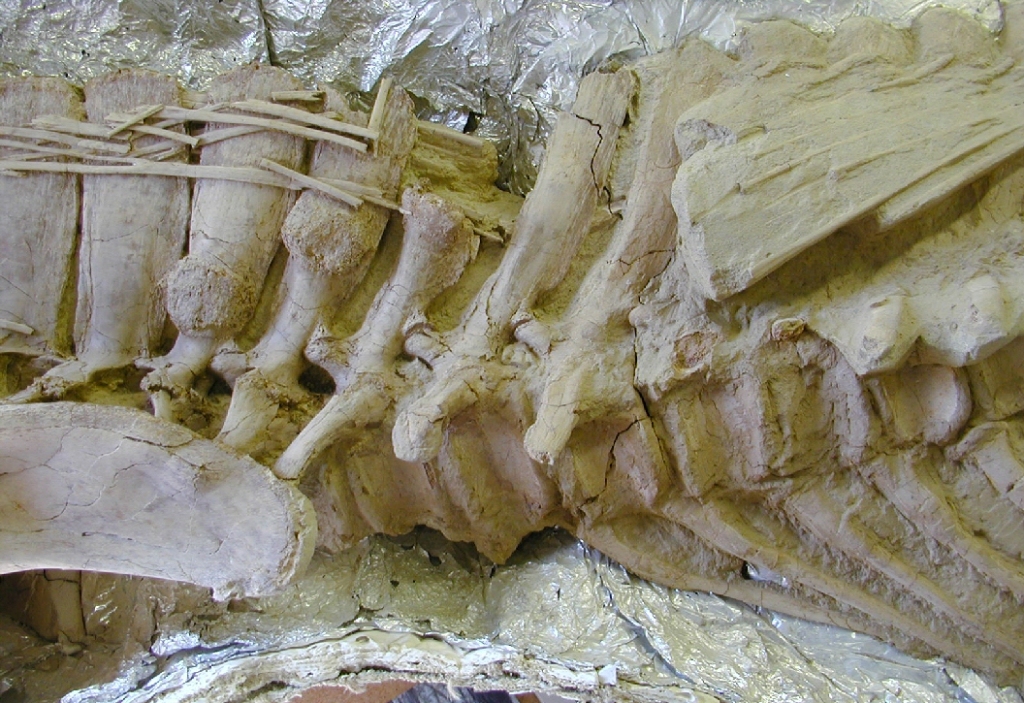| Image may be NSFW. Clik here to view.  |
| PNAS. Burnham et al (c) |
But what I think get's lost in all of this hoopla is that this discovery hints at a possible predatory strategy used by tyrannosaurids. The first time I came across this was Mark Wildman suggesting this strategy on facebook- which Heinrich Mallison added some pertinent anatomical layering in the comments. Subsequently I investigated further and saw that Heinrich had brought this strategy up way back in 2011 on his blog.
Any killer that is good at its craft develops a certain modus operandi, a particular style of killing that fits its needs and abilities optimally. This holds true if you are a serial killer or multi-tonne theropod. If clues are left behind and certain patterns emerge repeatedly this is cause to pay attention. And in the case of the tail-bitten hadrosaur- the latest case is not the first. There is the Brachylophosaus canadiensis JRDI 0002 which shows some profound damage and subsequent healing. The biter in question here is thought to have been Daspletosaurus sp.
| Image may be NSFW. Clik here to view.  |
| (C) Unknown |
Altogether these three cases are very suggestive of a pattern of tail biting among tyrannosaurids- at least when hunting hadrosaurids. But why bite the tail? I mean you don't really ever see mammalian carnivores targeting the tails of their prey. They more often go for the neck especially felids, or attack the limbs, groin, or belly like canids/hyaenas. Why the tail? Was it simply because that is all the tyrannosaur could reach?
I think not. Like the great white shark it is possible that tyrannosaurids had specific strategies for specific prey. And just as great whites modify their tactic based on the type of pinniped they are targeting (Catch as Catch Can) tyrannosaurids may have targeted the caudal tail region/hip in order to sever the caudofemoralis muscle- which is the largest propulsive organ in these animals. The hadrosaur was essentially grounded at this point to be dispatched at the tyrannosaurids leisure. That tyrannosaurids would have wanted to stop hadrosaurids as soon as possible is evident; the three specimens discussed above lived after the bite and healed a bit does point out that they were cursorial enough to escape tyrannosaurids. The predatory strikes in these cases missed the mark a bit and did not incapacitate the caudofemoralis muscle. Great whites will use a similar tactic on elephant seals by biting into their rear flippers from below, thus incapacitating their primary locomotory organ.
| Image may be NSFW. Clik here to view.  |
| MBDiane. (c) |

